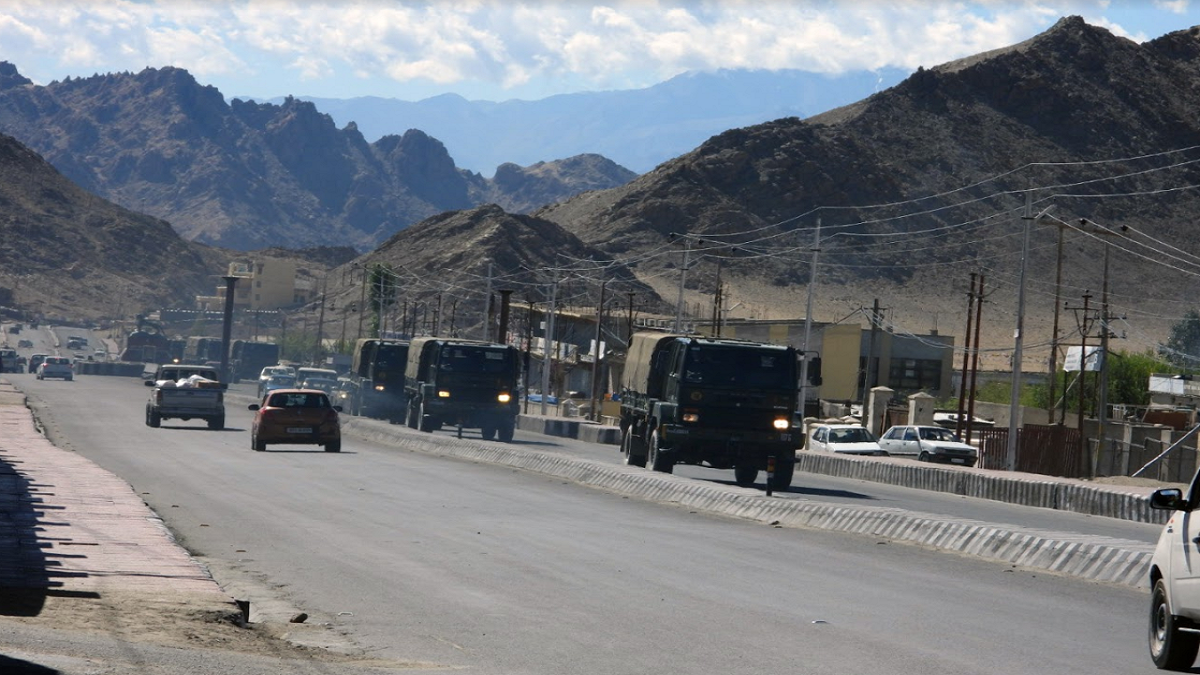


It took nearly 45 years for this change in India’s mindset to come about. It was made possible after Indian Army secured the commanding heights North and South of Pangong Tso, dominating the Kailash range in operations on 29-30 August.
Are the war clouds gathering across the western Himalayas during the last six months showing signs of dispersal? Anurag Srivastava, spokesman of the Ministry of External Affairs, briefing after the sixth round of talks between senior commanders of the two armies at Moldo on 21 September, seem to be hopeful. He said, “The way ahead will be to refrain from making any attempts at unilaterally change the status quo, while the two sides continue their discussions to achieve complete disengagement in all friction areas and to ensure full restoration of peace and tranquillity in the border areas.” Elton Musk would have described it as the two sides “trying to do is maximise the probability of the future being better”. But are they at it seriously?
The gritty issue for both sides is walking the talk. China usually walks and then talks. Considering the long history of China’s double speak and utter disregard for India’s sensitivities, it would be realistic to say the MEA spokesman’s words reflected India’s hopes, than expectations. The real danger is when confrontation builds up between nations, they can quickly inflame national sentiments, to turn it into conflict and conflagration.
William Faulkner in his novel The Sound and the Fury explores the way language and words construct meaning and implications. He describes how two characters discussed: “They all talked at once, their voices insistent and contradictory and impatient, making of unreality a possibility, then a probability, then an incontrovertible fact, as people will when their desires become words.” As the standoff between Indian troops and the Chinese enters fifth month in Ladakh, the possibility of a confrontation turning into a conflict seems to have at least temporarily delayed, not diminished.
If we note the small changes that came about during the meeting, we may find it incorrect to call the talks a fruitless 14-hour marathon. First, though the two armies continued to be in a gridlock, both have shown they preferred the eyeball to eyeball confrontation, to triggering a shooting war. But the chances of a shooting war remain high as the two armies are too close for comfort. When a crisis situation builds up, armies by their ethos and training, shoot to survive rather than worry about the fine print in the notings of meetings.
Two, during the talks, the phrase “status quo” has replaced yesterday’s favourite “status quo ante”, confirming that India cannot be “persuaded” with diplomatic rhetoric. It took nearly 45 years for this change in India’s mindset to come about. It was made possible after Indian Army secured the commanding heights North and South of Pangong Tso, dominating the Kailash range in operations on 29-30 August. Apparently, the Chinese were peeved at this “aggression” as CCP mouthpieces commented in its tabloids. However, China would have taken note that India now enjoys an incremental advantage, which has strengthened its position during the talks. But incremental improvement has only a half-life, till the other side comes up with another ploy. So how and when would the PLA react? This is going to be the key question in the coming months as the Himalayan winter sets in and makes even limited armed confrontation more difficult and dangerous. So, if shove comes to push, where would the Chinese troops react becomes a very important question. This would keep our troops in high alert in the coming months.
Three, the two delegations were led by the Joint Secretary (East Asia), MEA, and the Director General of Boundary and Ocean Department of China’s Ministry of Foreign Affairs at the meeting of the Working Mechanism for Consultation and Coordination (WMCC) on India-China border affairs. This showed a qualitative change in the two governments approach to these talks; earlier military talks and WMCC were held separately. Apparently, they have now graduated from military talks, beyond palaver between commanders, interpreted by the ever present PLA commissar, to more nuanced discussion of national strategic perspective. This is a welcome improvement and hopefully, represents the increased seriousness with which both the countries are approaching the urgent need to avoid war. When both India and China are affected by global coronavirus pandemic dislocating normal lives of their people it would be the only way to go about managing their troubled relations.
Abraham Lincoln’s words — “The probability that we fail in the struggle ought not to deter us from the support of a cause we believe to be just,” — applies not only to the vocal democracy like India, but China as well. The ball in China’s court to change the dynamics of the situation, because it is involved in power projection not only on its land frontier with India, but in the South China Sea, Hong Kong and Taiwan as well. Only the coming months will tell whether the talks are truly meaningful or not.
The writer is a retired MI specialist on South Asia and terrorism. He is actively associated with the Chennai Centre for China Studies.